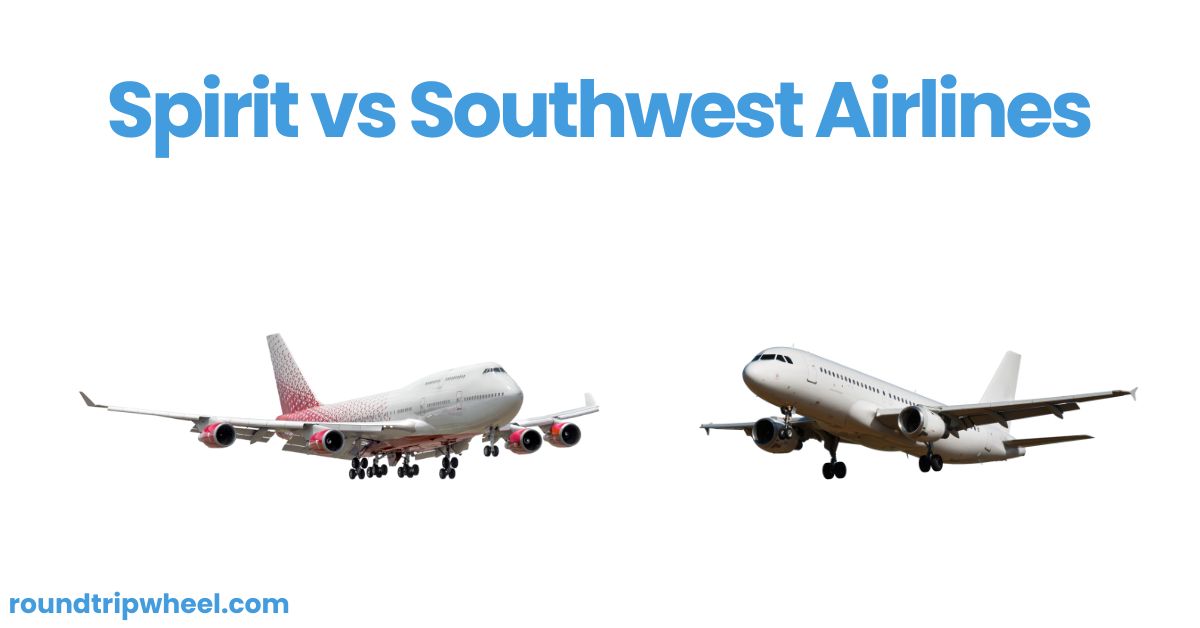Spirit vs Southwest Airlines: A Detailed Comparison

When it comes to affordable air travel in the United States, two airlines often come to mind – Spirit Airlines and Southwest Airlines. While both carriers offer low fares, their approaches to delivering value to customers are quite different. In this comprehensive analysis, we’ll delve into the key factors that distinguish these two airlines, helping you make an informed decision for your next flight.
Background and History
Southwest Airlines has been a trailblazer in the aviation industry since its inception in 1967. Based in Dallas, Texas, the airline pioneered the low-cost carrier model and has grown to become one of the largest domestic airlines in the United States. Southwest is known for its customer-friendly policies, such as free checked bags, no change fees, and a commitment to exceptional customer service.
Spirit Airlines, on the other hand, was founded in 1983 and is headquartered in Miramar, Florida. The airline has positioned itself as an ultra-low-cost carrier (ULCC), offering rock-bottom fares by unbundling services and charging fees for almost everything beyond the basic ticket. Spirit’s business model revolves around attracting price-conscious travelers by advertising attention-grabbing low base fares.
Fares and Fees
One of the most significant differences between Spirit and Southwest lies in their fare structures and ancillary fees. Southwest Airlines offers a straightforward pricing model that includes two free checked bags, no change fees, and complimentary snacks and beverages on board. While Southwest’s base fares may be higher than Spirit’s, the airline’s “Bags Fly Free” policy and lack of nickel-and-diming can make it a more cost-effective choice for many travelers, especially those checking bags or anticipating potential itinerary changes.
In contrast, Spirit Airlines is known for its ultra-low base fares, but these fares come with numerous additional fees for services that are typically included with other airlines. Passengers must pay extra for tasks like checking bags, choosing a seat assignment, and even printing a boarding pass at the airport. These fees can quickly add up, potentially negating the perceived savings of Spirit’s low base fare.
Seat Comfort and Amenities
Another key differentiator between Spirit and Southwest is the overall onboard experience and amenities offered. Southwest Airlines is renowned for its customer-friendly policies and relatively comfortable seating, with a seat pitch (the distance between a point on one seat and the same point on the seat in front of it) of 31 inches in economy class.
Spirit Airlines, on the other hand, prioritizes cost-cutting measures, resulting in a tighter seat pitch of 28 inches, which can be quite cramped for taller passengers or those with longer legs. Additionally, Spirit’s seats are renowned for their lack of padding, leading to discomfort on longer flights. Amenities like in-flight entertainment and complimentary snacks and beverages are also absent on Spirit flights, as the airline aims to keep costs as low as possible.
Customer Service and Loyalty Programs
Southwest Airlines takes pride in its exceptional customer service and has consistently ranked among the top airlines in customer satisfaction surveys. The airline’s employees are known for their friendly demeanor and willingness to go the extra mile for passengers. Southwest also offers a straightforward loyalty program, Rapid Rewards, which allows members to earn and redeem points for flights.
Spirit Airlines, conversely, has faced criticism for its customer service practices, particularly when dealing with flight delays, cancellations, or other disruptions. The airline’s ultra-low-cost model often translates into a no-frills approach to customer service. Spirit’s loyalty program, Free Spirit, is relatively basic and primarily rewards frequent flyers with discounted fares and priority boarding.
Flight Routes and Frequencies
Both Spirit and Southwest have extensive domestic route networks, but Southwest’s footprint is generally larger and more comprehensive. Southwest serves numerous major airports across the United States, as well as several international destinations in the Caribbean, Mexico, and Central America. The airline offers frequent flight schedules, making it easier for travelers to find convenient departure and arrival times.
Spirit Airlines, while expanding its route network, primarily focuses on leisure destinations and underserved markets. The airline’s flight frequencies can be more limited, especially on secondary routes, which may pose challenges for travelers with inflexible schedules or those seeking last-minute flights.
Environmental Impact and Sustainability
In recent years, airlines have faced increasing pressure to address their environmental impact and adopt more sustainable practices. Southwest Airlines has taken steps to improve its environmental footprint by investing in more fuel-efficient aircraft, implementing recycling programs, and exploring the use of sustainable aviation fuel.
Spirit Airlines, on the other hand, has faced criticism for its environmental record. The airline’s emphasis on cost-cutting measures has led to concerns about the age and fuel efficiency of its aircraft fleet. However, Spirit has also taken steps to reduce its carbon footprint, such as implementing single-engine taxiing procedures and investing in newer, more efficient aircraft.
Conclusion
Choosing between Spirit Airlines and Southwest Airlines ultimately comes down to personal preferences and travel priorities. If you’re a budget-conscious traveler willing to forego certain amenities and services in exchange for rock-bottom fares, Spirit Airlines may be an attractive option. However, if you value customer service, comfort, and a more inclusive fare structure, Southwest Airlines could be the better choice, even if it means paying slightly higher base fares.
It’s important to carefully evaluate your travel needs, weigh the potential additional costs associated with Spirit’s ancillary fees, and consider the overall travel experience you desire. Both airlines have their strengths and weaknesses, and the decision between them will depend on your specific circumstances and priorities.
Regardless of your choice, it’s always advisable to thoroughly research and compare fares, fees, and policies to ensure you’re making an informed decision that aligns with your travel preferences and budget.

About Author
Hey there, fellow explorers! I’m Mark Rodriguez, a big fan of adventures and always hungry for more. Packed with stories and a trusty camera, I’m on a mission to explore cool places around the world.
I love diving into new cultures and landscapes. As a travel writer, my goal is to get you excited about stepping out of your comfort zone, trying new things, and discovering the awesome magic our world has.
Check out my blog for cool stories, travel ideas, and helpful tips to plan your own amazing getaway!




